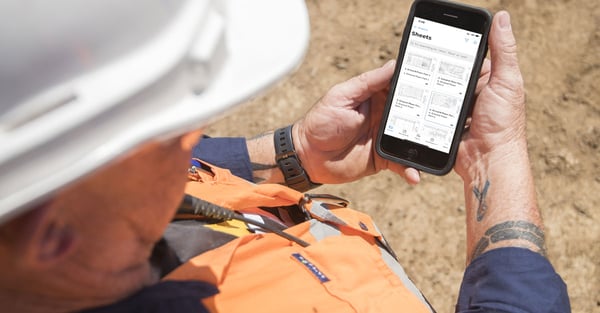Identifying, validating and introducing mobility solutions
Successfully implementing and sustaining an innovation into our organisation is an essential part of the process of improving performance and productivity.
CPB Contractors recently ran an innovation campaign to identify what our people knew was working well and should be replicated in our business. Overwhelmingly, the response was that they wanted the ability to be able to complete tasks, from start to finish, while they were on-site on a construction project, and not have to be coupled to their office workstations to complete their duties.
According to Damon McLean, CPB Contractors Group Manager Innovation, CPB Contractors needed to grow its mobility capability to enable people to be productive working remotely and digitally in the field.
“Something as simple as doing a field report used to involve getting a camera or phone, visiting the site to take the photos, then going back to the office to upload the photos to a computer, then preparing a Word document and merging the two before submitting them. Following that, the actions arising were then dealt with in a secondary system. It was inefficient, but just how it had always been done.
"Our people were very clear that this was a wasteful and inefficient way to complete an essential task. There had to be a better way.”
To deliver a fundamental improvement, a four-stage process was followed:
- Discovery: We used our CPB innovation platform to identify best in business solutions and assess these for the potential to provide an enterprise solution.
- Investigation: A market evaluation to assess their performance against our key operational requirements. From this process four potential systems were shortlisted.
- Assessment: A pilot was undertaken for the selected shortlisted solutions to test and validate performance across different live operational environments. As a pilot, failure of a shortlisted solution at this point was an acceptable part of sound testing, before committing the whole business.
- Delivery: The major step of permanently rolling out the solution to more than 1,300 staff across Australia, New Zealand and Papua New Guinea, with documentation, support and self-service training modules. This represented a substantial investment in time and resources for the business.
We have delivered improvements in how we undertake inspections, observations and audits, as well as equipped our people with a digital clipboard so all their information is easily accessible, and they can undertake quality inspections and test checks from the work front. Our new in-field staff productivity solutions enable people to work effectively from the field in a more efficient way than was previously possible.
Integration is key
According to Damon McLean: “We are continuing to investigate and assess mobility solutions that improve our ability to operate in the field. A key criterion to what we consider to be a high-performance solution is the ability for disparate systems to integrate with one another so our people can do more with less.
“Introducing and standardising a change like this can take time for a large company. Understanding what is working well inside our company, on our projects, and outside in the market, together with a consistent enabling process is important, because this allows us to identify and recognise pockets of excellence and scale identified high impact solutions so that everyone in the company can benefit.
“Our focus on integrated digital delivery means that we are moving towards equipping our people with all the information they need to make high-quality decisions faster. We’ve listened to our people, optimised efficiency and reduced waste.”
Read more about our transition to Integrated Digital Delivery here.

